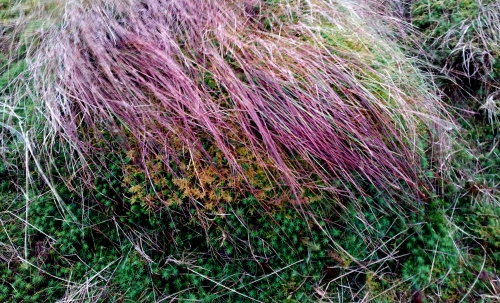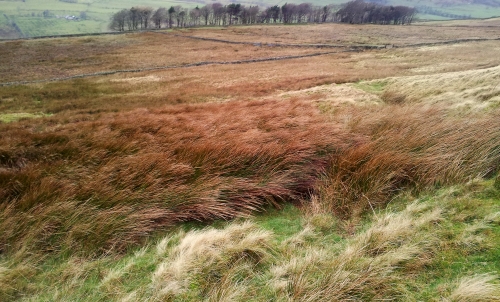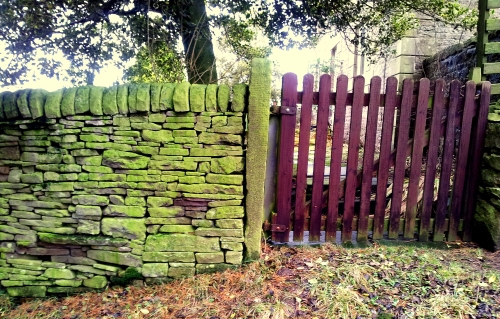Chögyam Trungpa on connecting to Buddhist teachings
Chögyam Trungpa on connecting to Buddhist teachings |
- Chögyam Trungpa on connecting to Buddhist teachings
- Unique In Relationship
- The Buddha Path Editing Conference and 9th Annual Dzogchen Winter Retreat
- Review: Haiku, An Anthology of Japanese Poems
| Chögyam Trungpa on connecting to Buddhist teachings Posted: 27 Dec 2011 07:00 AM PST
For more from Chögyam Trungpa, see our special online collection of his teachings from the Shambhala Sun, and don't miss "Ocean of Dharma," Barry Boyce's account of Trungpa's dramatic life and profound legacy, in our January 2012 magazine. (You can read Part 1, titled "Cutting Through Spiritual Materialism," here.) Read More @ Source |
| Posted: 26 Dec 2011 03:00 PM PST  Uniqueness, the gem  functions  in relationship. Ah yes! The camera has come alive on the moors. Read More @ Source pre buddhist This posting includes an audio/video/photo media file: Download Now |
| The Buddha Path Editing Conference and 9th Annual Dzogchen Winter Retreat Posted: 26 Dec 2011 11:00 AM PST The Dzogchen Shri Singha Foundation has announced that the Buddha Path Editing Conference and 9th Annual Dzogchen Winter Retreat will be held at the Dzogchen Retreat Center in Western Oregon this year. The two-week-long retreat will start at 3 PM on Tuesday, January 3, and will conclude on Wednesday, January 18, at 3 PM. This retreat will focus on "the editing and practice of the 3rd Edition of The Buddha Path by Dzogchen Khenpo Choga Rinpoche." According to dzogchenlineage.org, "The Buddha Path is a concise English language summary of all of Buddha's teachings and has been translated into several languages including Chinese and Russian." The original press release can be found here. Read More @ SourceTutorial2 3 Buddhism in China This posting includes an audio/video/photo media file: Download Now |
| Review: Haiku, An Anthology of Japanese Poems Posted: 26 Dec 2011 10:00 AM PST What a delight this little book is. To hold it in the hand is a very pleasing experience to begin with: it is light (for a hardback), is not much bigger than an adult's hand, and is wrapped in a beautiful brown and gold cover, illustrated with a painting by Sakai Hoitsu (see above). The contents of the book are even more impressive. As the title makes clear, it is a collection of haiku translated from the Japanese by Addiss and the Yamamotos. And what an excellent job they've done! Divided into three sections, 'The Pulse of Nature,' Human Voices,' and 'Resonance and Reverberation,' Haiku also features brief biographies of all the poets featured, as well as black and white prints by Japanese artists including the famous Zen priest Hakuin Ekaku. Beautiful. The Introduction gives the reader a concise account of the structure of haiku, its history in Japan, and an argument advocating a somewhat freer translation of haiku into English than the traditional seventeen syllables. In the Japanese originals of the poems that appear in this book, the standard form was seventeen sound units which amount to short syllables, so the word haibun consists of three such units, hai-bu-n (the final 'n' counting as a separate unit). And, as explained in the Introduction, Japanese uses more syllables to represent the same content than Eng! lish gen erally does, so extra words are needed to pad out English translations of the japanese originals if seventeen syllables are rigorously kept to. The editors of this work have decided, wisely in this reviewers opinion, to ignore the seventeen syllable rule, and focus more on accurate and poetic renderings of the haiku. To illustrate the above issues, the Introduction skillfully uses the example of the most famous of these poems, the 'ancient pond' verse of the greatest of all haiku poets, Basho (1644-1694). It argues that a faithful translation of this poem requires less syllables than in the Japanese original, coming up with the following on p.viii: Old pond a frog jumps in - the sound of water Other examples are used to elucidate the reader on other issues involved in the translation work, especially with regards to whether using a parallel translation (line-by-line), or a freer form where the line oder doesn't correspond with the original. The view here is that it depends on the particular poem, with some a parallel rendering works well, with others less literal version is required. Returning to Basho's frog haiku, the book contains a nice, albeit brief, exploration of the possible meanings of the piece; "old (the pond) verses new (the jumping), a long time span and immediacy, sight and sound, serenity and the surprise of breaking it" (paraphrased from p.xi ). So much contained in so few words - the beauty of haiku! Moving on to the main part of the book, the poems and black and white prints, the book really excels itself. The editors have chosen a wide range of haiku by many of the great poets from Japan's rich cultural history. Basho is joined by the other three masters of the form: Buson (1716-1783), Issa (1763-1827), and Shiki (1867-1902). Alongside these superstars of the haiku world, there are over ninety other poets featured. A real haiku fest in such a small book! Here's some more samples from the book featuring the three masters mentioned above: An old well falling into its darkness a camellia (Buson, p.5) Charcoal fire - my years dwindle down just like that (Issa, p.124) Killing the spider then so lonely - evening cold (Shiki, p.150) Taken in turn from each of the three sections referred to earlier, these poems each contain the subtle nuances of meaning not always apparent in the succinct nature of haiku. And in doing so, these haiku and the others in the book reflect the influence of Buddhist on the Japanese psyche and arts. Buson's camellia, for example, speaks of death and the unknown, whilst Issa's verse clearly refers to the Buddhist understanding of impermanence and aging, whilst Shiki talks of morality and regret…and the reader of this review can surely come up with his or her own interpretations also. This ambiguity inherent in haiku is one of their attractions, and for some, a source of infuriating vagueness. And yet, if this book is read cover to cover, this reviewer challenges even the staunchest of haiku-haters to deny the meanings and beauty contained in them! Returning for a moment to the Buddhist sentiments that through much haiku, we might briefly explore what value this book has spiritually. Haiku speak of the moment, this moment, as experienced by the poet. In doing so, they give the reader a glimpse into eternity. For, eternity or the Deathless as the Buddha called it, is only ever known in this current present moment; it is never the product of memory or imagination. The haiku in this book have the capacity to jolt the reader into this current moment, leaving her or him with a taste of the eternal. Hopefully, this will be realized by the reader of this review with the batch of quoted poems gi! ven belo w: The autumn wind takes the shape of pampas grass (Kigin, p.73) At the sound of the sea the sunflowers open their black eyes (Yuji, p.48) How delightful walking on dewy grasses - straw sandals (Haritsu, p.150) The above book is published by Shambhala Publications, and is available from their website at: The Monk Story This posting includes an audio/video/photo media file: Download Now |
| You are subscribed to email updates from BuddhaRocks ☸ Buddhist To stop receiving these emails, you may unsubscribe now. | Email delivery powered by Google |
| Google Inc., 20 West Kinzie, Chicago IL USA 60610 | |

 "In order to become a follower of the dharma, the teachings of the Buddha, one has to become nonaggressive, beyond aggression. In order to do that, there has to be some kind of warmth in oneself, gentleness to oneself, which is known as maitri, or loving-kindness. There also has to be greater gentleness to others, which is known as karuna or compassion. When we begin to make a connection to the teachings, to dharma, we are willing to open our gates, to tear down our walls." — from "Aggression," in
"In order to become a follower of the dharma, the teachings of the Buddha, one has to become nonaggressive, beyond aggression. In order to do that, there has to be some kind of warmth in oneself, gentleness to oneself, which is known as maitri, or loving-kindness. There also has to be greater gentleness to others, which is known as karuna or compassion. When we begin to make a connection to the teachings, to dharma, we are willing to open our gates, to tear down our walls." — from "Aggression," in 
